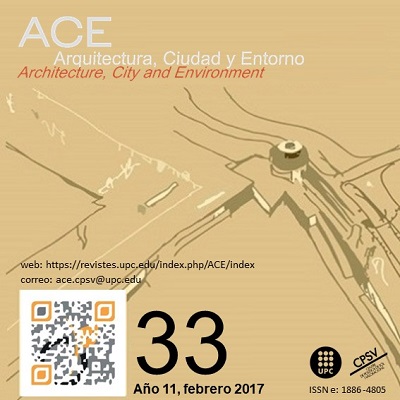The recovery of small historical centres, toward “historical small smart cities”
DOI:
https://doi.org/10.5821/ace.11.33.5153Keywords:
Smaller urban heritage, recovery and urban renewal, “modulation of protection”, new technologiesAbstract
In times of crisis of real estate sector, stop of urban growth, greater attention to the redevelopment and extension of the concept of historicity also to peripheral portions of the cities and rural landscape, urban planning policies have the opportunity and the task of reviving the historical centres.
Due to their (historical) function territorial presence in key socio-economic and environmental the historical centres can and must play a decisive role in the rebalancing of the territory, reversing the trends (almost also historical) to urban concentration and metropolisation.
Two additional factors of evolution can usefully contribute to this overall goal in the practice of urban recovery: the “modulation of the protection” and the new technologies.
The new technologies of digital communication, the ability to “move” data and information instead of people, more and more clean energy thanks to renewable sources, constitute a renewed opportunity to live and inhabit the smaller towns. So if on one hand it is important to protect these realities within the cultural landscape they are inserted, on the other they may be reconsidered in smart key, identifying possibilities for revitalization and sustainable regeneration.
Downloads
Published
Issue
Section
License
| INTELECTUAL PROTECTION CRITERIA |
At this moment, it is count with the "Oficina Española de Patentes y Marcas", while global protection it is being processed by the World Intelectual Property Organization (OMPI/WIPO). Nevertheless the International Standard Serial Number Office (ISSN) has given the following numbers ISSN: 1886-4805 (electronic version) and 1887-7052 (paper version). All articles will be peer reviewed, using double blind reviewing. |
| COPYRIGHT |
The article contents and their comments are authors exclusive liability, and do not reflect necessarily the journal editor commitee's opinion. All ACE published works are subject to the following licence CC BY-NC-ND 3.0 ES http://creativecommons.org/licenses/by-nc-nd/3.0/es/ It implies that authors do not hold nor retain the copyright without restrictions but only those included in the licence. |





































